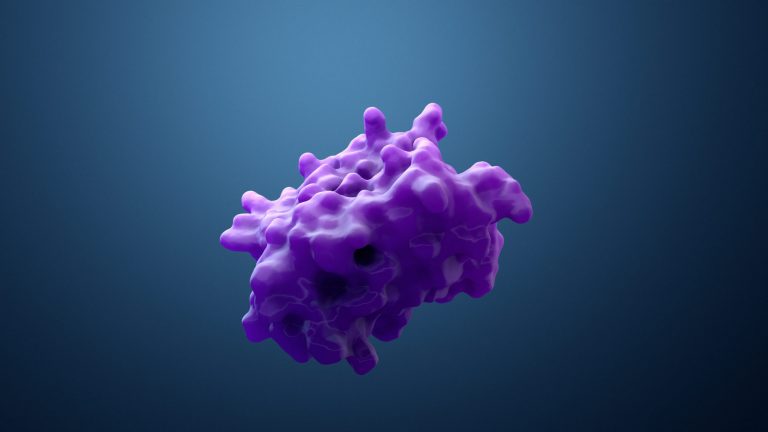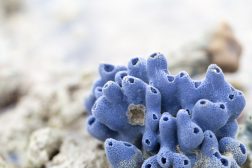Protein Variety

Protein (illustration)
The sequence of amino acids determines which type of protein it is. It is synthesized from a DNA strand, each DNA strand involved in protein synthesis is responsible for producing a unique protein.
Types of Protein
Over time and diversity of organisms, a huge amount of proteins exist and perform a unique function in the body. Primarily, there are three types of protein
- Fibrous Proteins – These fiber-like proteins are used for structural purposes in organisms. This is because fibrous proteins are arranged in long strands and are insoluble in water. Examples of use include providing a barrier in the cell wall of plants and myosin in skeletal muscle
- Globular Proteins – The polypeptide chains (protein chains) in globular proteins are folded together into a knot like shape essential in the fact that are present in the following1. Enzymes – Biological catalysts, enzymes are responsible for speeding up reactions in an organism
2. Hormones – Hormones are chemical messengers responsible for initializing a response in organisms. Some hormones have a regulatory effect, explained in later chapters in the tutorial
3. Antibodies – Antibodies are used to defend the body against foreign agents e.g. bacteria, fungi, and viruses. The next page investigates these.
4. Structural Protein – Globular proteins form part of the cell membrane, which has a structural role as well as a role in transporting ions in and out of the cell. - Conjugated Proteins – Conjugated proteins are essentially globular proteins that possess non-living substances, such as the haem found in hemoglobin, which possesses iron (a non-living substance)
Therefore proteins play a vital role in many of an organism’s biological processes and their organs. The next tutorial investigates cell defense against foreign agents, where proteins are playing their role in the form of antibodies…
You will also like...

Adaptation Tutorial
Adaptation, in biology and ecology, refers to the process or trait through which organisms or the populations in a habit..

Still Water Community Plants
This tutorial looks at the adaptations of freshwater plants for them to thrive in still water habitats. Familiarize your..

Roots
This study guide tackles plant roots in greater detail. It delves into the development of plant roots, the root structur..

Temperature Regulation in Animals
This tutorial elucidates body temperature regulation. Know the details here to learn how the body sets the body temperat..

New Zealand’s Unique Flora
If New Zealand has lots of unique animals, it's also got a whole lot of unique plants. Find out more about some of them,..

Primitive Animals
Life, as we know it today, is presumed to have started in the sea and many of them were likely eukaryotic animal-like or..
